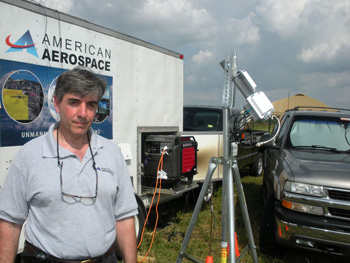 Despite popular misconceptions, fighting fires is a relatively safe job.
Despite popular misconceptions, fighting fires is a relatively safe job.From 1990 to 1998, only 133 people died fighting fires in the U.S., compared with
truck drivers or airline pilots, both averaging over 100 deaths per
year. But as the Pew
Center for Global Climate Change reports, snow is melting earlier
due to global warming, creating a longer dry season, which means more
forest fires. 2009 saw 5,921,786
acres burn in wildfires. Thats the most acreage burned in the last
20 years, representing 115 percent of the 20-year average. As expected, the
firefighting fatalities jumped as well, as 90 firefighters lost their
lives.
As the Pew report notes, the dry soil and extended season
has not increased the amount of fires but the overall size, as vast
expanses of unnaturally dry brush burn out of control at a much faster
pace. This report shouts the need for increased communication between
firefighters to keep this noble profession as safe as it can be. This
week, Radnor’s American Aerospace Advisors
launched a successful test of their flagship product: a robotic plane
that acts as a communication hub for firemen battling forest blazes.
When
firefighters are out in this mountainous terrain, you might set up a
fire camp in one valley and be fighting the fire a couple valleys over,
says AAA CEO David Yoel says. How does the incident commander
communicate with the firefighters who are out there doing the work? We
can orbit above with this unmanned aircraft, acting as a communications
tower in the sky.
The unmanned aircraft device also works as an
observational tool, taking pictures and safely determining the fires
outer boundaries. A former NASA physicist who worked on numerous shuttle
launches, Yoel created an aircraft based on successful unmanned
aircraft drones used by the military, in the hopes of bringing that
observational communication to other fields. As the technology evolves,
Yoel continues to push the FAA to loosen airspace restrictions, getting
his device off the ground in urban as well as rural areas. For now
though, he is content providing eyes and ears to the heroes who need
them most.
Someday in the future, I envision every cop car in
the country with one of these in the trunk so that when the bad guy is
running through the backyards, the cop just tosses this thing in the air
and follows the guy without having to chase him, says Yoel. As this
technology transitions into civil government applications, some areas
may evolve more quickly than others. Wildfires just happen to be the
first of many.
Source: David Yoel, American Aerospace
Advisors
Writer: John Steele